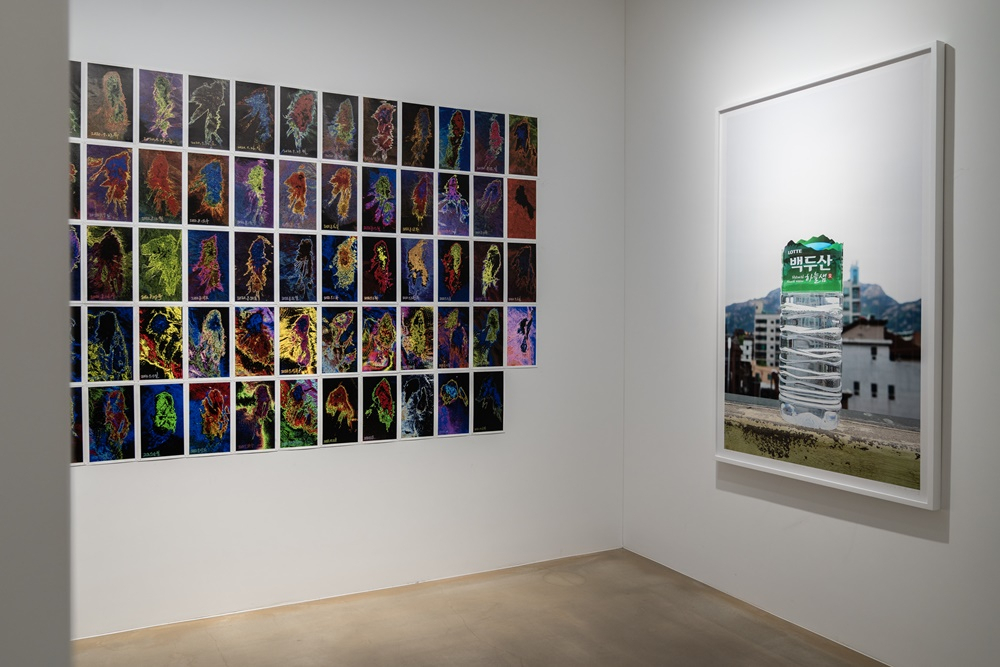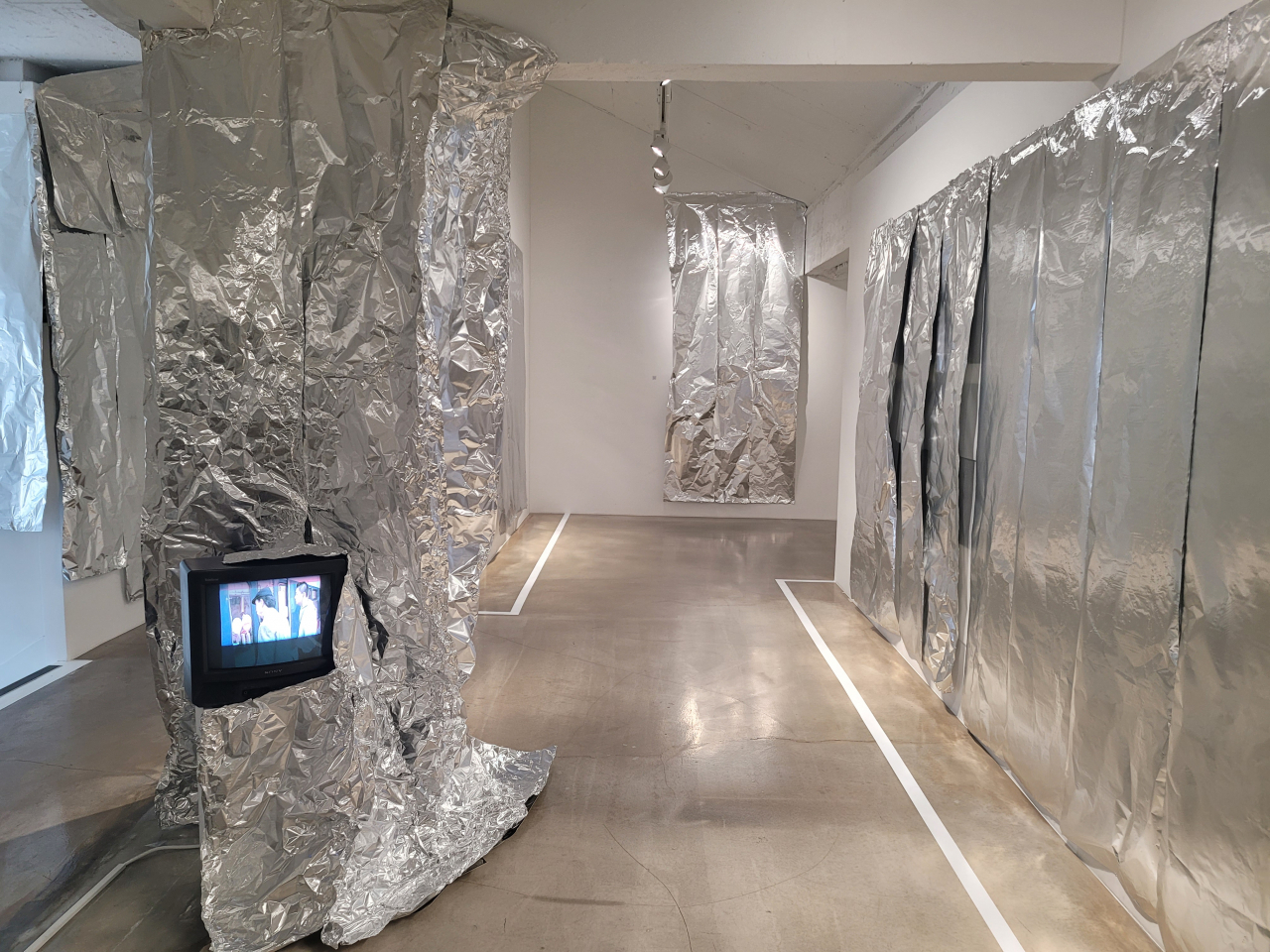 |
An installation view of "As If Nothing … The Artistic Meandering of Sung Neung Kyung" at Baik Art in Seoul (Baik Art) |
Sung Neung-kyung pioneered South Korea’s avant-garde art in the 1970s as a conceptual artist, when many other artists in the scene at the time were involved in speaking out against the dictator-led government through their art. Sung created rebellious art using newspapers that were censored at the time.
The 1970s was a time when the Korean art scene was a mixture of different art genres – Dansaekhwa, or Korea’s monochrome-style paintings; Minjung art, or paintings that criticize authoritarian government; and experimental art that evolved around a group of conceptual artists including Sung.
Since he was young, the 80-year-old artist has persistently explored experimental art. He was one of the core members of the Korean artist group “Space and Time," which pioneered avant-garde art in the country along with fellow artist Lee Kun-yong.
“I was skeptical about materiality in art,” Sung told reporters on Feb. 22, to explain how he became interested in conceptual art at a time when it was unfamiliar in South Korea’s art scene.
“I wanted to eliminate materiality in art, and when I did that, just an act of performing left,” he said during a press conference held ahead of the opening of his solo exhibition “As If Nothing … The Artistic Meandering of Sung Neung Kyung," which runs through April 30 at Baik Art in Seoul. The exhibition encompasses Sung’s art works from the 1970s to the early 1980s, featuring photographs, performances and newspaper works.
 |
An installation view of "As If Nothing … The Artistic Meandering of Sung Neung Kyung" at Baik Art in Seoul (Park Yuna/The Korea Herald) |
The artist has been known as “unyielding artist” who has stuck with his art. He has more than five decades of experience, but the latest exhibition is only the second solo show to be held at a commercial gallery.
Before unveiling his art to the public, he covered the works with aluminum foil at the exhibition, calling for an attitude to approach art carefully. It was aimed to criticize how easily works are consumed today in the art market.
Decades since conceptual art emerged in the 1960s, the Korean art scene is now paying attention to avant-garde artists from the time who spoke to the world through an artistic language of their own. These artists would showcase rebellious art against the authoritarian government of the time in unprecedented ways.
In Sung’s representative 1974 performance art piece “Newspapers: From June 1, 1974, On,” the artist cut out all the text of a daily newspaper, leaving only the white margins, pictures and advertisements. He performed his piece from June 21 to 27 to protest the government’s censorship of news media.
In conjunction with the National Museum of Modern and Contemporary Art, Korea, the Guggenheim Museum will show “Only the Young: Experimental Art in South Korea, 1960s-70s” in September, shedding light on the genre for the first time in North America. Sung is one of the artists who will join the show.
“How conceptual art, which originated from the West, has expanded and has been interpreted globally will be an interesting point to Westerners,” Sung said on the recent global interest in Korean experimental art.
The group show at the Guggenheim Museum will travel to Hammer Museum in Los Angeles in early 2024.






![[Today’s K-pop] Blackpink’s Jennie, Lisa invited to Coachella as solo acts](http://res.heraldm.com/phpwas/restmb_idxmake.php?idx=644&simg=/content/image/2024/11/21/20241121050099_0.jpg)
